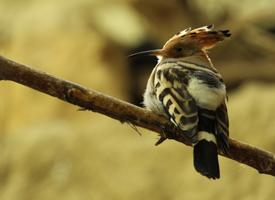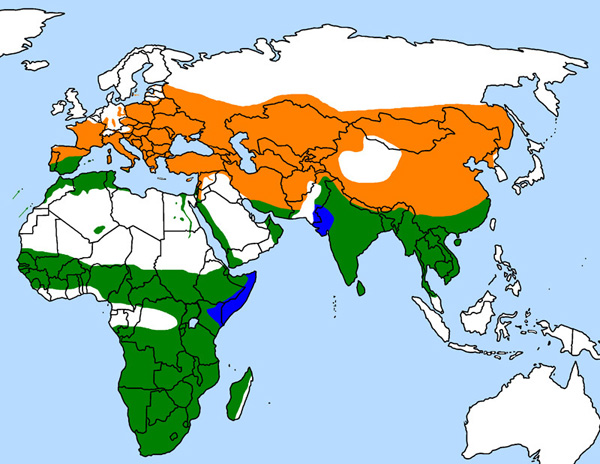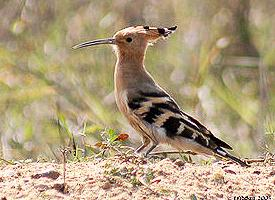
Descrierea animalului
The Eurasian hoopoe, scientifically known as Upupa epops, is a distinctive and striking bird that captures the attention of birdwatchers and nature enthusiasts across its wide range in Europe, Asia, and North Africa. This bird belongs to the family Upupidae, and it is renowned for its unique appearance, fascinating behaviors, and the symbolic significance it holds in various cultures.One of the most notable features of the Eurasian hoopoe is its colorful plumage. The bird boasts a beautiful array of colors, with a pinkish-brown body, black and white striped wings, and a long, black-tipped tail that opens like a fan. The hoopoe's crown is perhaps its most remarkable attribute; it consists of a crest of feathers that can open into a large, circular fan or lie flat, depending on the bird's mood and intentions. This crest is orangey-pink, with black tips, giving the bird a regal appearance that has inspired admiration and folklore throughout history.
The Eurasian hoopoe is a medium-sized bird, measuring about 25 to 32 centimeters in length, with a wingspan of approximately 44 to 48 centimeters. It has a long, thin bill that curves downward, enabling it to forage for food on the ground. Its diet mainly consists of insects, including beetles, crickets, locusts, and larvae, but it can also eat small reptiles, frogs, and plant matter.
Hoopoes are ground foragers, and they are often seen walking along the ground, probing the soil with their bills in search of food. Their flight is undulating, similar to that of a butterfly, which adds to their enchanting presence. They are also known for their distinctive call, a soft, repetitive "oop-oop-oop," from which their name is derived.
Breeding season brings out more of the hoopoe's unique behaviors. They are cavity nesters, often choosing a hole in a tree, wall, or cliff to lay their eggs. The female incubates the eggs alone, while the male brings food. Interestingly, hoopoes have developed a unique defense mechanism to protect their nests. They can produce a foul-smelling liquid from a gland near the base of their tail, which they use to deter predators.
Eurasian hoopoes are migratory birds, with populations in northern and eastern Europe and Asia moving south to warmer regions in winter. Their migration patterns and the habitats they choose—open woodlands, grasslands, savannas, and even human-altered landscapes—reflect their adaptability and resilience.
Culturally, the hoopoe has been a symbol of virtue and vice, wisdom and folly, across various traditions. It appears in the Quran, where it is associated with King Solomon and the Queen of Sheba, and in ancient Egypt, it was considered a symbol of virtue. In contrast, in medieval Europe, its distinctive crest and probing bill led to associations with theft and nosiness.
In conclusion, the Eurasian hoopoe is a bird of paradoxes—visually stunning yet equipped with malodorous defenses, celebrated in some cultures and vilified in others. Its distinctive appearance, intriguing behaviors, and the rich cultural symbolism it carries make the Eurasian hoopoe a fascinating subject of study and admiration in the natural world.
Harta răspândirii

Animale similare
Fotografii noi cu animale
Top 10 animale
- Dolphin gull (Leucophaeus scoresbii)
- Diana monkey (Cercopithecus diana)
- Moustached guenon (Cercopithecus cephus)
- Galápagos tortoise (Geochelone nigra complex)
- Stone loach (Barbatula barbatula)
- Japanese macaque (Macaca fuscata)
- Greek tortoise (Testudo graeca)
- Russian tortoise (Testudo horsfieldii)
- Common flying dragon (Draco volans)
- Galápagos penguin (Spheniscus mendiculus)
